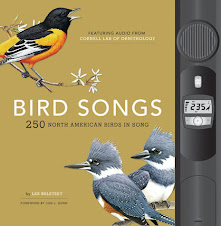
We saw a tufted titmouse at the bird banding center. I can identify those. I knew it was a tufted titmouse because it was gray and had a tuft.
We learned from the bird bander that it sometimes hangs upside down while it's feeding. He also told us that it sometimes holds a nut with its feet while pounding it with its bill.
This is the picture we took of the tufted titmouse.
Facts we learned while making this post:
First we listen to the call, of course, silly coo coo horse (Arden is giggling and saying, "she's writing it!).
Here it is. We found a page that shows different calls, so you can hear more than one.
Tufted titmice flock with chickadees, woodpeckers, and nuthatches. At bird feeders, they are assertive with smaller birds. This means that they take over.
They're relatives to chickadees.
They hoard their food in the winter and the fall.
Tufted titmice don't know how to make their own nests. They don't know how to start their nests, so they look for holes that are already there. These can be made by woodpeckers. Birdhouses that people put up are good for them, too.
They eat mostly insects in the summer. They also eat seeds, nuts, and berries.
They like to live in dense woods. They also live in parks.
 When we were in Mexico in February and March, we saw a lot of birds. One of our favorites was the Blue Footed Booby. We were on a whale watching trip, but we saw on a huge cliff (which I think is a big thing with rocky edges) a colony of blue and brown footed boobies. We are going to write about the Blue Footed Booby today, but we will soon learn about the Brown Footed, which I've just mentioned.They live off the Western coasts of America, Mexico (which is where we were, including Puerto Vallarta), and South America. They are common on the Galapagos Islands.
When we were in Mexico in February and March, we saw a lot of birds. One of our favorites was the Blue Footed Booby. We were on a whale watching trip, but we saw on a huge cliff (which I think is a big thing with rocky edges) a colony of blue and brown footed boobies. We are going to write about the Blue Footed Booby today, but we will soon learn about the Brown Footed, which I've just mentioned.They live off the Western coasts of America, Mexico (which is where we were, including Puerto Vallarta), and South America. They are common on the Galapagos Islands.
























